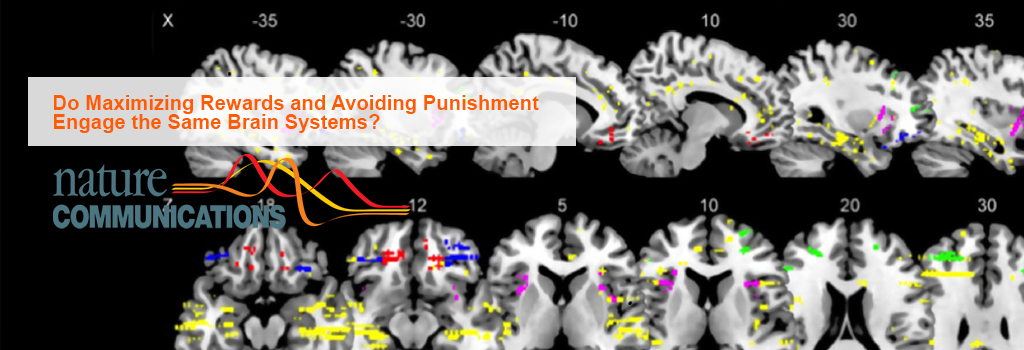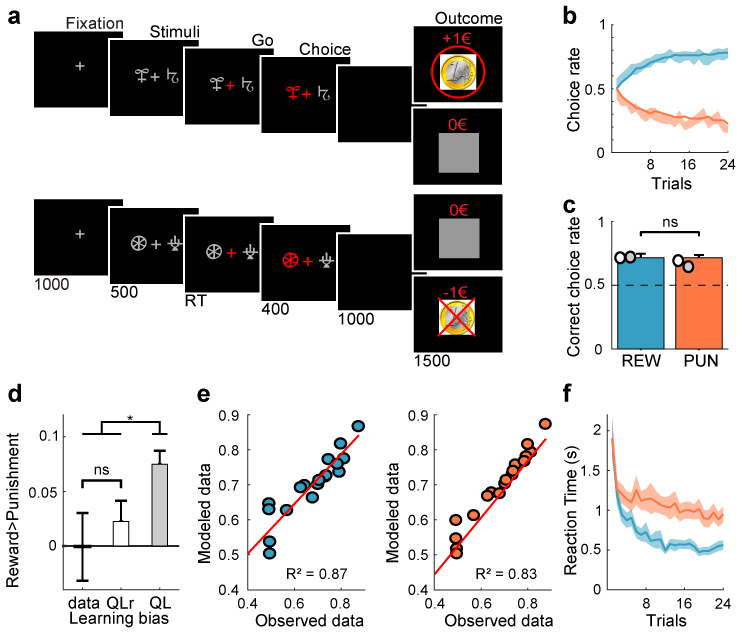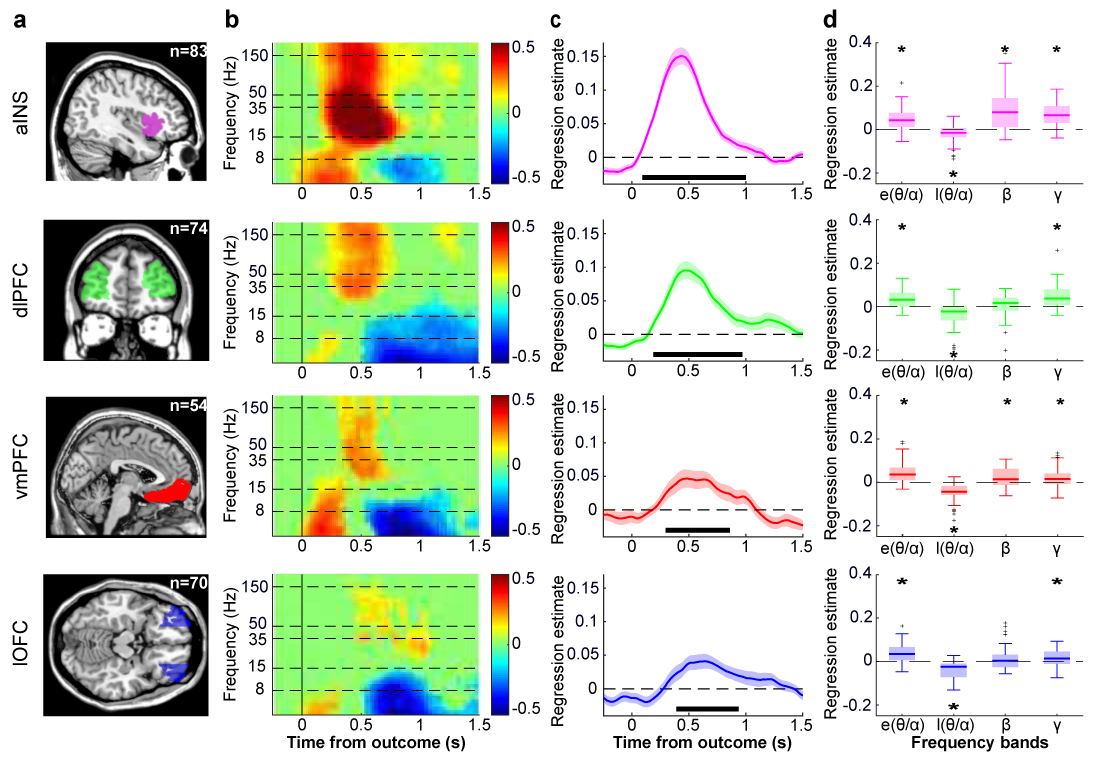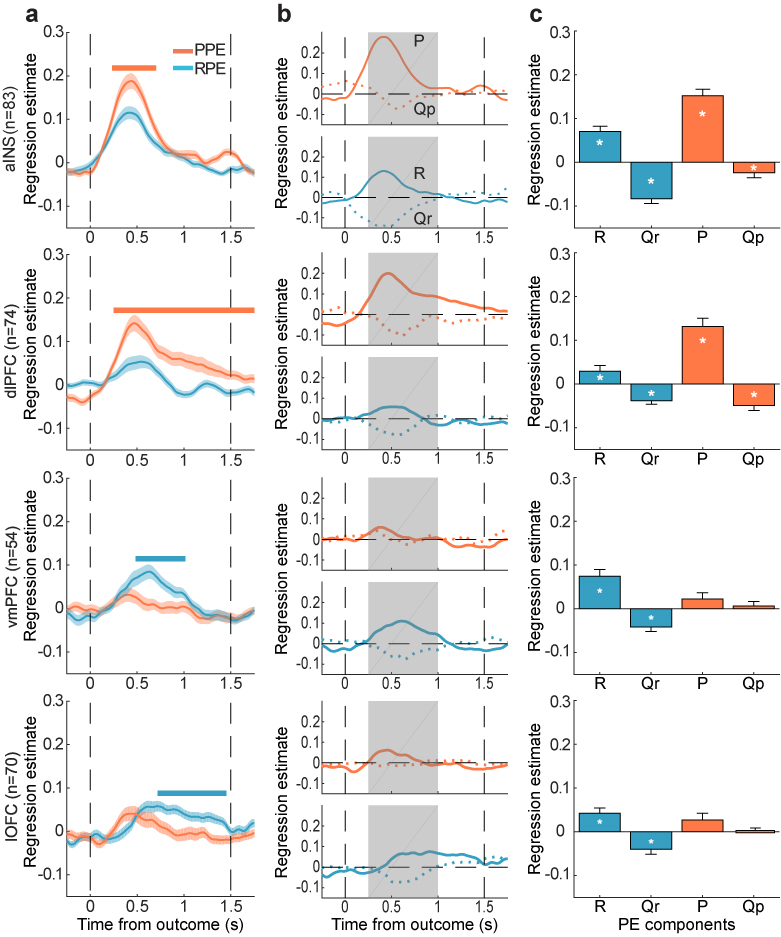- Share
- Share on Facebook
- Share on Twitter
- Share on LinkedIn
- Share url
Team J.Bastin
On June 21, 2021

Whether maximizing rewards and minimizing punishments rely on distinct brain systems remains debated, given inconsistent results coming from human neuroimaging and animal electrophysiology studies.
Bridging the gap across techniques, researchers from the Team "Brain, Behavior and Neuromodulation" led by Julien Bastin carried out a new experiment, the results of which were published in Nature Communications.
Researchers recorded intracerebral activity from twenty participants while they performed an instrumental learning task. They found that both reward and punishment prediction errors (PE), estimated from computational modeling of choice behavior, correlate positively with broadband gamma activity (BGA) in several brain regions. In all cases, BGA scaled positively with the outcome (reward or punishment versus nothing) and negatively with the expectation (predictability of reward or punishment). However, reward PE were better signaled in some regions (such as the ventromedial prefrontal and lateral orbitofrontal cortex), and punishment PE in other regions (such as the anterior insula and dorsolateral prefrontal cortex).
These regions might therefore belong to brain systems that differentially contribute to the repetition of rewarded choices and the avoidance of punished choices.

a Successive screenshots of a typical trial in the reward (top) and punishment (bottom) conditions. Patients had to select one abstract visual cue among the two presented on each side of a central visual fixation cross, and subsequently observed the outcome. Duration is given in milliseconds. b Average learning curves (n=20 patients). Modeled behavioral choices (solid line) are superimposed on observed choices (shaded areas represent mean ± SEM across patients). Learning curves show rates of correct choice (75% chance of 1€ gain) in the reward condition (blue curves) and incorrect choice (75% chance of 1€ loss) in the punishment condition (red curves). c Average performance (correct choice rate, n =20 patients). Modeled performance is indicated by white and gray disks (using Q-learning+repetition bias and basic Q-learning model, QLr and QL, respectively). Dots represent individual patients. d Difference between conditions (reward minus punishment correct choice rate) in observed and modeled data. Dots represent individual patients and error-bars represent mean ± SEM across patients (n = 20). e Inter-patient correlations between modeled and observed correct choice rate for reward (blue) and punishment (red) learning. Each circle represents one patient. Red line represents the linear regression across patients (n = 20). f Reaction time (RT) learning curves. Median RT are averaged across patients and the mean (±SEM) is plotted as function of trials separately for the reward (blue) and punishment (red) conditions. Black horizontal bars represent the outcome of two-sided statistical tests of difference, using paired Student’s t tests in c and d. ns means not significant and asterisk indicates significance in d (QL>QLr, p=0.0037; QL>data, p=0.013).

a. Anatomical localization of the aINS (purple), dlPFC (green), vmPFC (red), and lOFC (blue). All recording sites located in these parcels were included in the ROI analyses. The sample size used to derive statistics in panels b–d are displayed for each ROI (aINS: n = 83; dlPFC: n=74; vmPFC: n=54; lOFC: n=70).
b. Time-frequency decomposition of PE signals following outcome onset. Hotter colors indicate more positive regression estimates. Horizontal dashed lines indicate boundaries between frequency bands that are investigated in panels c and d. c Time course of regression estimates obtained from linear fit of BGA with PE modeled across reward and punishment conditions. Solid lines (filled areas) indicate mean (SEM) across recording sites. Horizontal bold black lines indicate significant clusters (pc?<?1?×?10?3; one-sample, two-sided Student’s t test after cluster-wise correction). d Regression estimates of power against PE, averaged over early (0–0.5?s) and late (0.5–1?s) post-stimulus windows for the lower-frequency bands (?/?: 4–13?Hz) and over the 0.25–1?s window for higher frequency bands (?: 13–33?Hz and broadband ?: 50–150?Hz). Center lines, box limits, whiskers, and crosses of the box plots, respectively represent median, interquartile range, and outliers of the data distribution from the n recording sites. Stars indicate significance (all p values?<?0.05) of regression estimates (one-sample, two-sided Student’s t test). Error bars correspond to inter-sites SEM and dots correspond to individual recording sites.

a. Time course of regression estimates obtained from linear fit of BGA with PE modeled separately for the reward (blue) and punishment (red) conditions (PPE punishment prediction error, RPE reward prediction error). Horizontal bold lines indicate significant difference between conditions (blue: RPE>PPE; red: PPE>RPE; pc<0.05). Shaded areas represent inter-sites SEM.
b. Time course of regression estimates obtained from a linear model including both outcome (solid lines) and expected value (dotted lines) components for both reward (R and Qr) and punishment (P and Qp) PE. c Regression estimates averaged over the 0.25–1s time window (represented as shaded gray areas in panels b). Stars indicate significance (*p<0.05, one-sample, two-tailed Student’s t test). Error-bars correspond to inter-sites SEM and dots correspond to individual recording sites. The sample size (n) used to derive statistics in all panels was: aINS: n=83 sites; dlPFC: n=74; vmPFC: n=54; lOFC: n=70.
Reference :
Anatomical dissociation of intracerebral signals for reward and punishment prediction errors in humans.
Gueguen MCM, Lopez-Persem A, Billeke P, Lachaux JP, Rheims S, Kahane P, Minotti L, David O, Pessiglione M, Bastin J.
Nat Commun. 2021 Jun 7;12(1):3344. doi: 10.1038/s41467-021-23704-w. PMID: 34099678 Free article.
Date
- Share
- Share on Facebook
- Share on Twitter
- Share on LinkedIn
- Share url